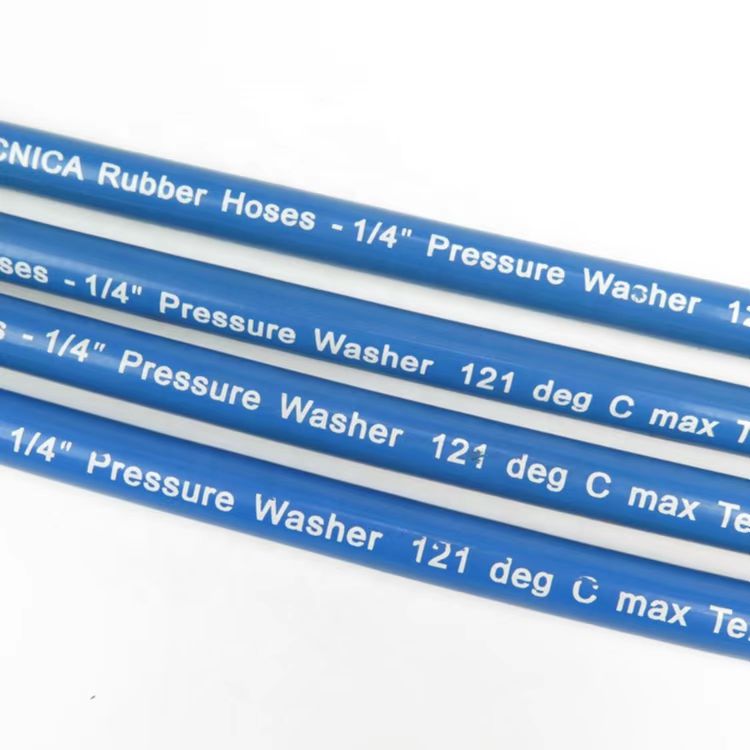335345435
Aug . 13, 2024 18:01 Back to list
Reliable Manufacturers of SAE 100R14 Hydraulic Hoses for Industrial Applications and Performance Standards
Understanding SAE 100R14 A Key Standard in Hydraulic and Industrial Hose Manufacturing
The SAE 100R14 specification is a crucial standard in the world of hydraulic hoses and industrial applications, playing a significant role in ensuring safety, reliability, and efficiency. Manufacturers adhering to this standard provide hoses that are capable of withstanding high pressures while maintaining flexibility and resistance to various environmental factors. This article will delve into the features of SAE 100R14 hoses, their applications, and the importance of selecting the right manufacturer.
What is SAE 100R14?
SAE 100R14 is a specification set by the Society of Automotive Engineers (SAE) that outlines the requirements for the manufacturing of polytetrafluoroethylene (PTFE) and Teflon hoses. These hoses are designed for use in a variety of industries, including hydraulic systems, chemical processing, and food and beverage applications. The SAE 100R14 standard specifies that hoses must be able to handle high temperatures and pressures, particularly when transporting corrosive materials.
One of the primary characteristics of SAE 100R14 hoses is their construction. These hoses typically have a smooth bore, which minimizes turbulence and allows for a steady flow of materials. Furthermore, they often feature a braided or spiral reinforcement structure that enhances their pressure tolerance. The most common variants include the SAE 100R14A and SAE 100R14B, with distinctions primarily in the type and amount of reinforcement, making each suited for different applications.
Applications of SAE 100R14 Hoses
sae100r14 manufacturer

The versatility of SAE 100R14 hoses makes them suitable for a wide range of applications. One of the most significant uses is in hydraulic systems, where they facilitate the transfer of hydraulic fluids under high pressure. Their ability to withstand temperatures ranging from -65°F to 450°F ensures they can function in various environments.
In the chemical industry, these hoses are essential for transporting aggressive chemicals that can corrode standard materials. The PTFE construction provides excellent chemical resistance, making SAE 100R14 hoses a popular choice for transporting acids, bases, and solvents. Similarly, in food and beverage applications, where hygiene and safety are paramount, the ability of these hoses to resist bacterial growth and withstand extreme temperatures is crucial.
Importance of Choosing a Quality Manufacturer
When selecting SAE 100R14 hoses for specific applications, it is critical to partner with reputable manufacturers. The quality of the hose can significantly impact the performance and safety of the systems they are integrated into. A trusted manufacturer will not only adhere to SAE standards but will also conduct rigorous testing to ensure their hoses meet or exceed performance requirements.
A manufacturer’s experience and expertise can also greatly influence the reliability of the hoses. Companies that specialize in producing SAE 100R14 hoses typically have advanced manufacturing processes, quality assurance protocols, and a deep understanding of material properties. This ensures that the hoses they produce are durable, efficient, and capable of withstanding the rigors of demanding environments.
In conclusion, understanding the SAE 100R14 specification is crucial for anyone involved in industries that rely on hydraulic and industrial hoses. The advantages provided by these hoses, including flexibility, chemical resistance, and high-pressure tolerance, make them indispensable in various applications. By choosing a reliable manufacturer, businesses can ensure they receive high-quality hoses that meet the stringent requirements of the SAE 100R14 standard, ultimately enhancing safety and operational efficiency in their projects.
-
SAE 100 R17 Black Smooth Cover Hydraulic Hose
NewsMar.07,2025
-
SAE 100 R17 Black Smooth Cover Hydraulic Hose
NewsMar.07,2025
-
SAE 100 R17 Black Smooth Cover Hydraulic Hose
NewsMar.07,2025
-
SAE 100 R17 Black Smooth Cover Hydraulic Hose
NewsMar.07,2025
-
SAE 100 R17 Black Smooth Cover Hydraulic Hose
NewsMar.07,2025
-
steel wire braided hydraulic hose
NewsMar.07,2025



